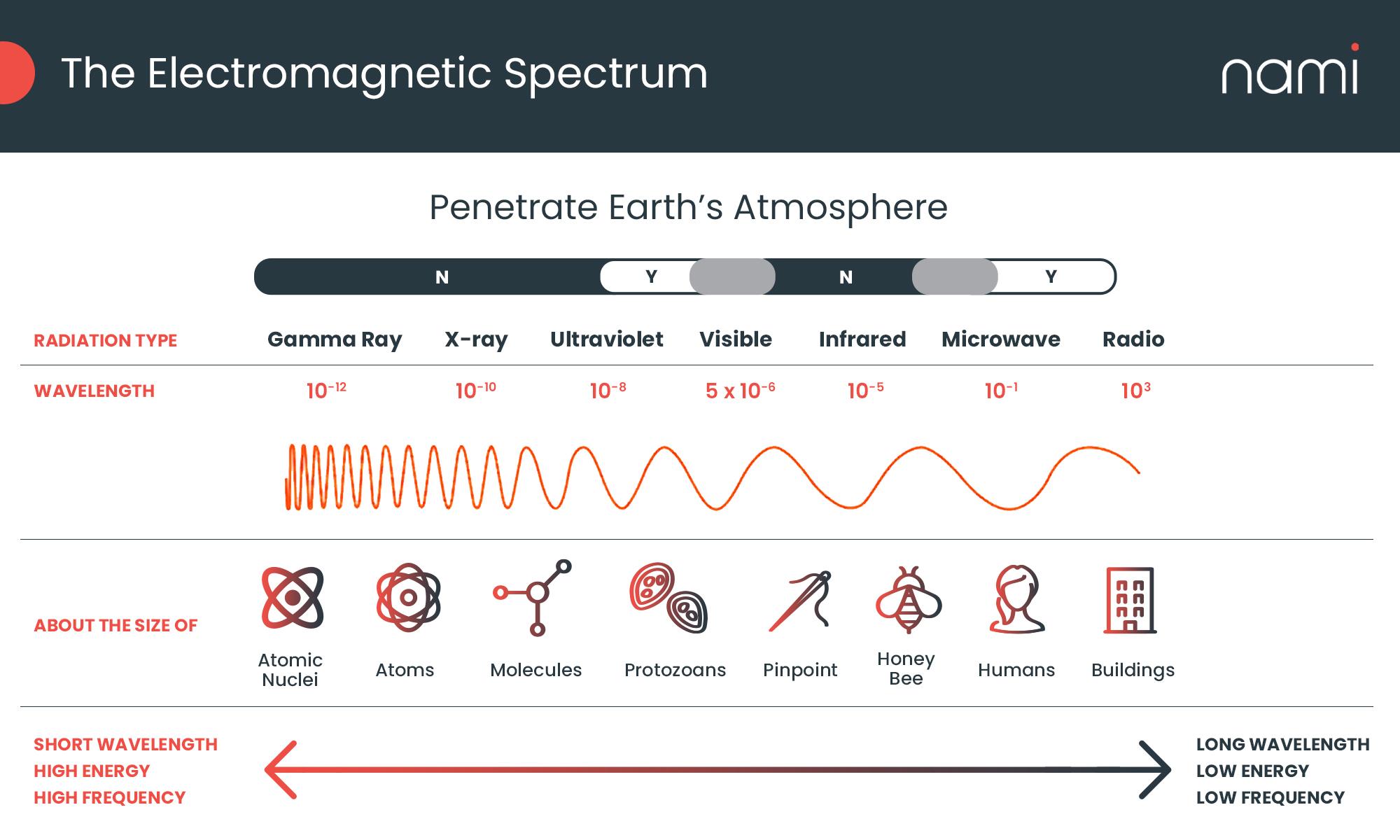Key Takeaways
- Wireless sensing detects and interprets motion and human activity via the analysis of changes in the electromagnetic/radio waves that propagate from a transmitter to a receiver.
- Wireless sensing is a broad term, incorporating what is often referred to as ‘WiFi sensing’, but also other related forms of motion detection.
- Wireless sensing should not be confused with wireless sensors networks, which are a specific industrial application.
Wireless sensing is a new technology for detecting and interpreting motion that is elevating standard setups for smart homes. Wireless sensing uses electromagnetic/radio waves, just like your home WiFi devices, to detect and interpret motion.
In this guide, we look in detail at some different wireless sensing technologies and how they are being enabled through a new technical standard process.
To find our about the benefits and challenges of wireless sensing, and its main applications
What Is the Definition of Wireless Sensing?
Wireless sensing, in its simplest terms, means detecting or measuring physical phenomena without the need for a tangible physical connection (like wires).
Wireless sensing works through detecting disturbances in electromagnetic waves or signals — the same kinds of waves that are commonly used by your home WiFi connection. Compared to ‘wired’ forms of sensing, this technology is more mobile and versatile, and able to communicate over both short and long distances. Some common applications of wireless sensing include:
- Home security. Intrusions can be detected through unexpected disturbances in wireless waves. Wireless sensing-enabled IoT devices can be used in addition to video cameras and other sensors to provide comprehensive security solutions.
- Health and wellbeing monitoring. Unusual movement of elderly or vulnerable family members (such as falls) can be detected and notifications automatically sent to family members or emergency services.
- Energy management. Detection of presence and motion can be used to automatically power up and down devices based on predicted occupancy.
You can read more about the applications of wireless sensing in our detailed analysis of the pros, cons and practical use cases for wireless sensing.
Most commonly, wireless sensing involves WiFi sensing. This means using WiFi — also known as wireless local area networks (WLAN) — to detect motion (read more in our guide to WiFi sensing). Wireless sensing usually proceeds through two distinct stages:
- Pre-processing. Raw data provided by wireless sensing devices (commonly known as ‘CSI’ or ‘channel state information’) is filtered to eliminate pets, robot vacuum cleaners and other sources of ‘noise’. This means that the information transmitted is focused on human motion only.
- Higher-order processing. Machine learning is used to analyze the data in more complex cases such as micro-motion. It is this kind of processing that might be able to distinguish between, say, respiration and a heartbeat (more on this below).
In addition to WiFi, wireless sensing could also conceivably involve other forms of technology such as:
- Bluetooth and Bluetooth Low-Energy (BLE). This allows wireless communication over short-wavelength UHF (ultra-high frequency) radio waves.
- Near-Field Communication (NFC). This allows two electronic devices to establish communication when they’re in close proximity to one another — typically less than 4 cm (about 1.5 inches). While useful for contexts like contactless payment and reading barcodes, this would generally not cover the distance needed for robust wireless sensing.
- Radio-Frequency Identification (RFID). This technology uses radio waves to read digital data included in specific ‘RFID tags’. These are commonly used for anti-theft purposes, for inventory tracking, and in toll collection, among other purposes.
Some other types of sensors which also don’t involve physical wiring include Passive Infrared (PIR) and acoustic sensors. However, as these sensors rely on heat and sound energy, rather than radio waves, they are generally not classified under the label “wireless sensing”.
How Does Wireless Sensing Work?
P / ML) and wr, d
ev
ase
In wireless sensing, electromagnetic waves are emitted by devices across a room or area. Any disturbance in those waves is picked up by enabled devices, and analyzed by the sensing technology. This disturbance indicates movement in the room, and the sensing technology is able to determine whether that is human motion or not.
Wireless sensing is usually implemented via several different ‘layers’:
- Hardware. Either specifically manufactured devices, or altered devices, become ‘sensing enablers’, allowing them to receive and interpret wireless signals.
- Processing. The device itself automatically provides the initial filtering of data (see description above).
- Transmission. Sensing data is sent to centralized hubs and/or devices for the end user.
- Use and analysis. The data is received and used by the end-user, such as the individual receiving an intrusion alert on their smartphone. In some cases, the wireless sensing data may be combined with other insights to draw further conclusions about motion within the building.
You can read more about how wireless sensing works in Jie Wang et al. (2018). “Device-Free Wireless Sensing: Challenges, Opportunities, and Applications“. IEEE Network. Vol. 32, no. 2.
To read specifically how deep learning models might be applied to wireless sensing data check out Rajendran et al. (2018). “Deep Learning Models for Wireless Signal Classification with Distributed Low-Cost Spectrum Sensors“. IEEE Transactions on Cognitive Communications and Networking. Vol. 4, No. 3.
The History of Wireless Sensing
P / ML) and wr, devcase
The scientific basis for wireless sensing can be traced back to 1865 when Scottish Physicist James Clerk Maxwell predicted that electric charges and currents give rise to electric and magnetic fields. These fields, in turn, propagate through space as waves.
This prediction was, in turn, confirmed by the experiments of the German Physicist Heinrich Hertz in the 1880s. He showed that electromagnetic waves could be produced by an oscillating electric current, and that these could be detected from a distance through a simple receiver.
This experimentation also confirmed that electromagnetic waves behaved like light and could reflect, refract and diffract — prisms and lenses were used to demonstrate how waves could be bent and focused.
Then through experiments in the late 1890s and early 20th century, Guglielmo Marconi demonstrated that information could be sent wirelessly via electromagnetic waves. Through wireless telegraphy, the operator could interrupt the transmission of electromagnetic waves in regular patterns to correspond with Morse Code.
Audio transmission then followed, and the rise of radio broadcasting, as did radar — using electromagnetic waves to detect movement. Wireless sensing was born.
Is Wireless Sensing the same as Wireless Sensor Networks?
A Wireless Sensor Network (WSN) is a grouping of spatially dispersed sensors that monitor the physical environment and sends data to a central location. It consists of ‘nodes’ (that house each individual sensor and transmit the relevant information via radio waves) and a ‘base station’ (that collects information from the nodes to be sent to the user).
Classic use cases for WSNs include geographical and area monitoring, such as geofencing of gas or oil pipelines, or habitat monitoring. In the latter case, wireless sensors have been extremely successful in allowing vulnerable wildlife to be observed, without potentially harmful human interference. For example, in studies conducted on Great Duck Island in Maine, wireless sensor networks have been successful in showing with seabird (Petrel) monitoring to show:
- The usage pattern of nesting burrows
- Changes in the burrows themselves and the nesting environment.
This data was in turn used to predict future seabird behaviour. Read more about this study in Mainwaring, A. et al. (2002). “Wireless sensor networks for habitat monitoring“. Proceedings of the 1st ACM International Workshop on Wireless Sensor Networks and Applications. NY, USA, ACM.
While the term is not as often used in this context, a home security setup, or wearables network that uses wireless technology would also count as a WSN.
What Is the Technical Standard for Wireless Sensing?
A standard is a published document setting out the technical specifications for a particular kind of product. The Institute of Electrical and Electronics Engineers (IEEE) sets out a range of standards that are relevant to wireless sensing. These standards ensure that technology is developed safely, reliably, and with full interoperability.
- IEEE 802.11 is the general WiFi standard. In fact, WiFi is simply defined as the local wireless network that uses this standard. These operate on both the 2.4GHz UHF and 5GHz bands of the electromagnetic spectrum. WiFi certification is a separate process overseen by the WiFi Alliance.
- IEEE 802.15.1 is the standard for Bluetooth, which also uses the 2.4 GHz band on the electromagnetic spectrum.
A new standard specifically for wireless sensing is currently in development and is set to be unveiled in 2024. The 802.11bf wireless sensing standard is intended to provide a broad basis for innovative wireless sensing products.
Currently, it is proposed that there be a division of wireless sensing:
- lower-frequency waves (1GHz to 7.125GHz) for motion sensing in large spaces
- higher-frequency waves (45GHz and above) for micro-movements.
The infographic below demonstrates how electromagnetic waves (including those deployed in wireless sensing) are classified along the electromagnetic spectrum.

Wireless Sensing Defined
Wireless sensing is the detection and analysis of presence and motion via the effect that motion has on electromagnetic waves. In the modern smart home, these waves are oftenWiFi waves, similar to those that radiate from a WiFi router. While it is relatively new technology, work on a new technical standard for wireless sensing should help encourage innovation, and enable standardization, in the area.
To learn more, check out our article on the applications of wireless sensing.
Frequently Asked Questions
A set of sensing devices are connected in a network. Antennae within some of those devices send out wireless/radio signals or waves at a high rate. These waves then break when they hit solid objects. Machine learning algorithms contained in the wireless sensing technology are able to distinguish between moving objects and objects that are stationary.
Often the terms are used interchangeably, with ‘wireless sensing’ being shorthand for ‘wireless local area network (WLAN) sensing’. However, sometimes the term ‘wireless sensing’ is used more broadly to include any form of motion detection that uses electromagnetic of radio waves to detect and interpret motion.
Yes, wireless sensing combines well with cameras, microphones, wearables, acoustic sensors and other forms of environmental detection to create comprehensive multi-sensing solutions.




